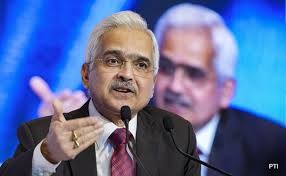Finally, it has happened!
India is included in the JPMorgan Government Bond Index-Emerging Markets (GBI-EM) global index suite.
But it’s not happening tomorrow. India’s inclusion in the GBI-EM global index suite will start on June 28, 2024. India will get a weight of 10 per cent in the GBI-EM Global Diversified Index, but not at one go. From June next year, 1 per cent each will be added every month, making it 10 per cent by March 2025.
Launched in June 2005 as the first comprehensive global local emerging markets index, GBI-EM tracks local currency bonds issued by emerging market governments. It has $213 worth of assets under management (AUM).
The market has been waiting for this since October 2021 when India was put on the watch list with 60 per cent of the investors supporting the decision of India’s inclusion in this index. At that time, JPMorgan had said that India needed to improve market access, trading and settlement to achieve index inclusion. But Russia’s exclusion from the index, following its invasion of Ukraine in February 2022, brightened the prospects of India’s inclusion.
The Reserve Bank of India (RBI) for the first time discussed with JPMorgan the prospect of getting into the index in FY2014 when India was facing its worst current account deficit and the value of the rupee faced sharp depreciation against the US dollar. It did not happen because of the strict regulations on foreign exposure to the Indian debt market in terms of maturity, quantum of investment and the profile of the debt instrument. The scenario has changed since then.
FTSE Russell, a subsidiary of London Stock Exchange Group, too, has kept Indian government bonds on its watch list for a possible inclusion.
After the inclusion into GBI-EM GD index, the possibility of India’s inclusion into the Bloomberg Global Aggregate Index gets stronger. If indeed that happens, it could result in inflows of $15-20 billion with India’s weight ranging from 0.6 per cent to 0.8 per cent, says an IDFC First Bank Ltd note.
Along with GBI-EM Global Diversified Index, India is also expected to enter other JPMorgan bond indices such as the Asia (ex-Japan) local currency bond index called JADE Global Diversified index, Jade Broad Diversified index and other aggregate suite of local currency indices. In such indices, India’s weight will be between close to 15 and 20 per cent over the 10-month period till March 2025. Overall, the JPMorgan government bond indices for emerging markets have $236 billion AUM.
It took so long for India’s nearly $1.2 trillion government bond market, the largest among emerging economies after China and Brazil, to enter the global index.
Russia had around 8 per cent weight in the GBI-EM index. After its exclusion, China, Indonesia, Thailand, Malaysia, Brazil, Mexico and South Africa — seven of the 20 countries in the index — had a 10 per cent weight each. India will enter the 10 per cent club by March 2025.
By the end of August, five countries — China, Indonesia, Mexico, Malaysia and Brazil — had 10 per cent weight each, followed by Thailand (9.79 per cent), South Africa (8.11 per cent), Poland (7.57 per cent) and Czech Republic (6.18 per cent). The rest of them had less than 5 per cent with the Philippines having the least weight — 0.06 per cent.
Since June 2021, the RBI has been fine-tuning some of the reporting norms, giving more flexibility to foreign investors for buying government bonds. It has also allowed banks to lend to them for the so-called margin requirements.
Ahead of that, in 2020, the RBI had removed limits on foreign ownership in certain bonds by introducing the Fully Accessible Route (FAR). There are currently 23 such bonds with $330 billion total outstanding. All such bonds are eligible to enter the GBI-EM global index suite. A JPMorgan note estimates India’s weight to reach the maximum permissible 10 per cent limit in the GBI-EM Global Diversified and 8.7 per cent in the GBI-EM Global index.
The eligible bonds to enter the indices must have a notional outstanding amount of at least $1 billion and two and a half years to mature. Hence, to start with, only those government bonds that are designated FAR and maturing after December 31, 2026, will be eligible.
Analysts have been citing many reasons for the delay in India’s inclusion in global bond indices. One of these is high taxation. Once a bond is sold within a year, it attracts up to 30 per cent capital gains tax. Besides, foreign portfolio investors need to pay 20 per cent withholding tax on interest income.
Settlement has also been an issue. India had apparently been insisting on settling them onshore and not on an international platform like Euroclear. The global settlement platform ensures smooth clearing and settlement. There have been recent media reports that the now RBI is not averse to the idea of processing the settlement of Indian bonds on the Euroclear platform.
The current process of setting up a foreign portfolio investment account is also quite cumbersome, involving stringent know-your-customer, or KYC, norms.
But one thing is for sure that in terms of infrastructure — trading, settlements and transparency — India is a sophisticated market, better than most developed economies.
Going by latest data from the Clearing Corporation of India Ltd, which settles the government bond market transactions, foreign investors own around $8.4 billion worth of bonds — less than 15 per cent of what they are allowed to buy (around $60 billion, including state development loans or SDLs). Their investment in SDL is negligible — less than 1 per cent of the limit.
Ever since we opened up the capital markets to foreign investors, the flow of debt has roughly been one-third of equity. There have been many years when the debt flow has been negative. Even though the equity market opened up for foreign investors immediately after economic liberalisation in September 1992, the norms for foreign investment in debt were released in 1995; and in 1997, Rs 29 crore trickled in.
One can expect $22-25 billion foreign funds to flow in a staggered manner after this inclusion. If Bloomberg and FTSE Russel too follow JPMorgan, the flow could be even more. The inclusion will also facilitate a passive flow to the Indian bond market, similar to index fund investment in Nifty where every stock of a particular index gets investment in accordance with its weight in the index.
Bond prices rallied on Thursday, a day before the announcement, but it was a premature celebration. The market surrendered all gains and bond yields rose on Friday. Theoretically, this will have a positive impact on the pricing next year, bringing down the government’s as well as corporations’ borrowing cost. It will be a booster dose for the rupee, too.
Increasing foreign presence in the debt market will release some of the pressure on our banks and free up money for lending as demand for loans is picking up and growth in bank deposits is not catching up with the credit growth.
Finally, there are challenges, too.
In January 2024, JPMorgan will start “enhanced liquidity screening” for bonds issued in a global format from index-eligible markets. Not too many Indian bonds are liquid. The RBI needs to take care of this. And, any negative external or internal development could lead to the exit of foreign investors, creating volatility and affecting the prices of bonds.
This column first appeared in Business Standard
The columnist is a Consulting Editor with Business Standard and Senior Adviser to Jana Small Finance Bank.
His latest book: Roller Coaster: An Affair With Banking
Twitter: TamalBandyo
Website: https://bankerstrust.in



